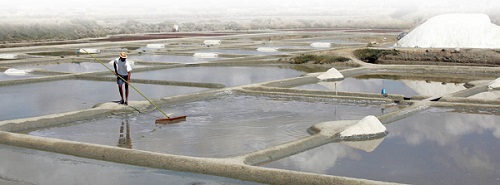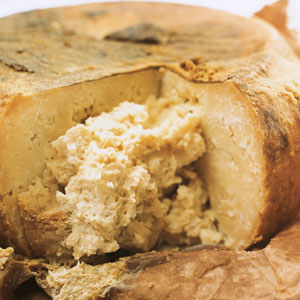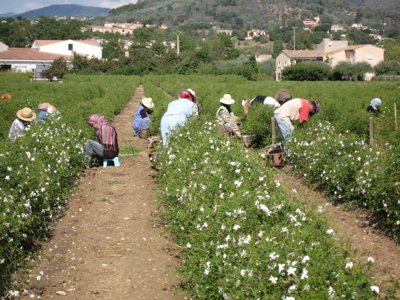
Guérande sea salt
As long as 2700 years ago, salt was being extracted on the Guérande peninsula, in the southern tip of Brittany, near the Loire estuary. In the distant past clay containers full of salt water were heated in ovens until salt was produced. The Romans obtained their salt in this way – as three preserved wells prove – and they used it among other things to produce garum, their favourite spicy sauce made from salted fish. From at least as early as the 9th century, a fundamental change came about in the way that salt was extracted. Then it was learned about how to exploit the power of evaporation of the sun and wind and the movement of the tides. Following a special pattern, salt basins were created over the centuries which determined the unique ecological features of the Bassin de Guérande and Bassin de Mes.
The oldest salt basins, of which five are still in operation, date back to the Carolingian era. They consist of a series of canals and basins, built into the flat loam terrain. Using an ingenious system, every two weeks at high tide the salt farmer, the paludier, allows seawater to run in through the canals to a large collecting reservoir, by opening a sluice gate. Several salt basins are supplied from this 10-40 cm deep pond, in which the first impurities are deposited. Evaporation then begins in the summer. If one litre of seawater contains 34gms of common salt, the concentration now rises to 40gms. In the next irregular shaped basin the salt content is already up to 50gms, as the water is further treated. From there it transfers through a watercourse to the final, precisely arranged system of evaporation basins, called the fards, which are 4-5 cms deep. With the warmth of the sun the water temperature rises to 32C. The water is continually flowing but the flow is also restricted by a number of smaller ponds thereby increasing the evaporation rate.
With a salt content of 200gms per litre or 20° Beaumé (specific gravity scale) the water then flows out of the last fard into the adernes, These ponds contain the daily requirement of salt solution for the oeillets, the large (70 square metre), shallow (5-10mm) rectangular-shaped basins where the salt crystallizes. Every day during harvest time, which runs from June to Sept, salt farmers carefully push the salt to the edge with a long rake and collect. The main harvest is made up of evenly sized gray crystals.
Before this, however, the first fine white crystals are deposited on the surface of the salt solution, the density of which is by now 250-300gms per litre. This is the best salt, the fleur due sel.
The Guérande peninsula supplies the coarse salt extracted in an exclusively traditional way from the Atlantic. The other salt basins are further south at Noirmoutier, the Ile de Ré, and off the Ile d’Oléron. The main production of sea salt, however, is from the salt marshes at Aigues Mortes on the Mediterranean coast where the salt is collected by machinery and refined.
Today in France rock salt plays only a minor role in salt production. In addition to salt farmers, mussel and oyster farmers have become established on the Presu’îde Guérande since the beginning of the 20th century. Both the salt marshes and the basins of the shellfish farmers in this parish, plus those in La Turballe, Batz-sur-Mer, Le Poliguen, and Le Crosic are conservation areas. This encompasses both the special architectural legacy of the saltmarshes and theie wealth of flora and fauna.










